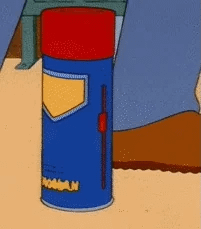Knuckle Crackers
When I was a kid, few things were more satisfying to me than cracking my knuckles.
I was warned that this would lead to arthritis, but even knowing that, I accepted the trade-off and did it anyway. It’s a good thing this one turns out to be one of those myths we grow up with, but which aren’t really true.
What’s going on in there, though? We have some idea, but we don’t know everything.
The most widely accepted explanation is called cavitation theory. Fortunately, it’s pretty easy to imagine what’s happening. If you’ve ever seen someone spray a can of WD-40 at something to lubricate a hinge, you already have the idea.
Your joints are hinges. The WD-40 is called synovial fluid.
When you stretch a joint, it creates negative pressure inside the capsule—the little pocket that encapsulates the joint inside your body. This pressure causes gas bubbles to form from the gases that are dissolved in the fluid.
Gas bubbles can enter the fluid from the surrounding tissues, and when the pressure get…
Keep reading with a 7-day free trial
Subscribe to Goatfury Writes to keep reading this post and get 7 days of free access to the full post archives.


